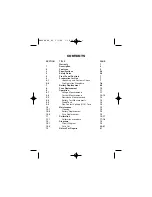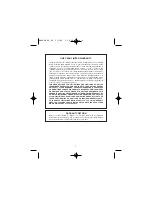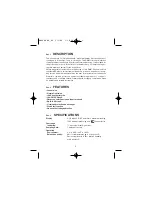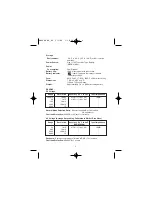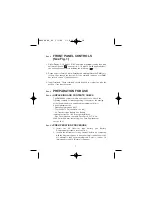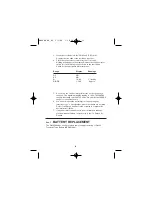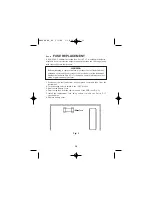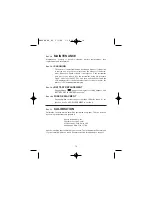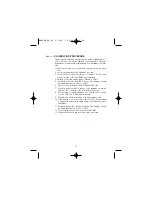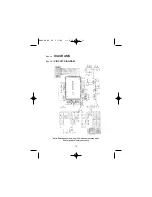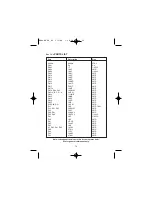
3. Raise the "COM" terminal potential above 500V to ground.
4. Energize the circuit. If the reading is within the next lower range,
switch to that range after completely de-energizing the circuit
under test. Continue changing to lower ranges if the reading is
within the next lowest range to obtain the best accuracy.
5. Completely de-energize the circuit before removing the test
leads.
Sec. 9.3
RESISTANCE MEASUREMENTS
1. Insert the black and red test leads into the respective "COM"
and "V-W" terminals.
2. Place the range selector switch into the W range desired for a
measurement.
CAUTION
All resistance measurements should be taken on de-energized cir-
cuits only.
To avoid possible electric shock, instrument damage and/or
equipment damage do not connect the "COM" and "V-Ω" terminals to cir-
cuits having a potential difference exceeding 250VDC/AC. Do not con-
nect the "COM" terminal to potentials exceeding 500V to ground.
3. Completely de-energize the circuit or device, which is to be
measured. Connect the test leads to the device (the red test
lead is positive with respect to the black test lead). A reading of
1000 (“1” flashing) indicates an overrange condition. This will
occur with the test leads open on all resistance ranges. If over-
range occurs when taking a reading, switch to the next highest
range.
Sec. 9.5
DIODE TESTS
1. Connect the red test lead to the "VΩ" jack and the black test
lead to the "COM" jack.
2. Set the Function/Range switch to the "
" position.
3. Turn off power to the circuit under test. External voltage across
the components causes invalid readings.
13
DM4400 04_06 5/3/06 1:10 PM Page 16


